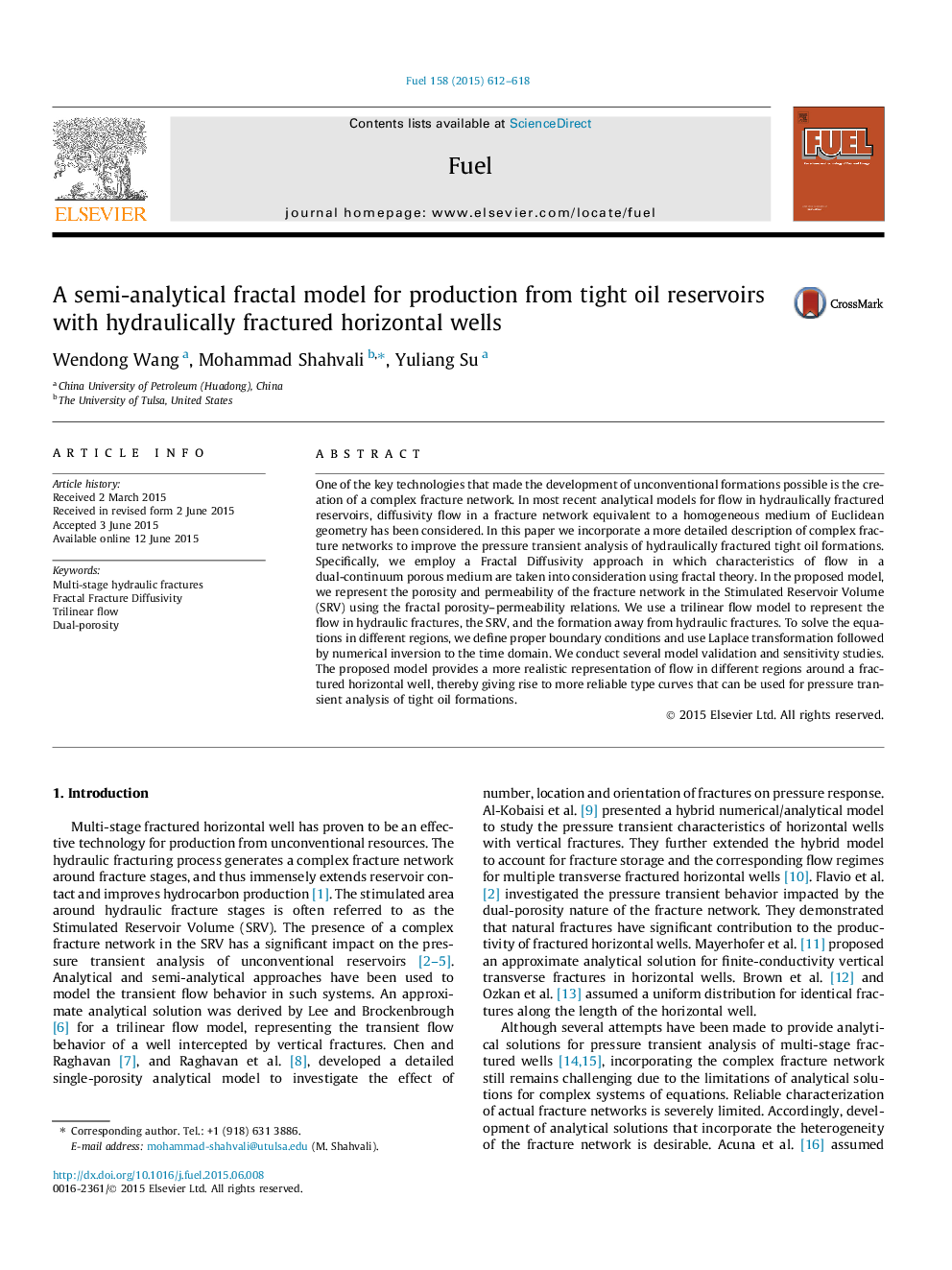| Article ID | Journal | Published Year | Pages | File Type |
|---|---|---|---|---|
| 6635058 | Fuel | 2015 | 7 Pages |
Abstract
One of the key technologies that made the development of unconventional formations possible is the creation of a complex fracture network. In most recent analytical models for flow in hydraulically fractured reservoirs, diffusivity flow in a fracture network equivalent to a homogeneous medium of Euclidean geometry has been considered. In this paper we incorporate a more detailed description of complex fracture networks to improve the pressure transient analysis of hydraulically fractured tight oil formations. Specifically, we employ a Fractal Diffusivity approach in which characteristics of flow in a dual-continuum porous medium are taken into consideration using fractal theory. In the proposed model, we represent the porosity and permeability of the fracture network in the Stimulated Reservoir Volume (SRV) using the fractal porosity-permeability relations. We use a trilinear flow model to represent the flow in hydraulic fractures, the SRV, and the formation away from hydraulic fractures. To solve the equations in different regions, we define proper boundary conditions and use Laplace transformation followed by numerical inversion to the time domain. We conduct several model validation and sensitivity studies. The proposed model provides a more realistic representation of flow in different regions around a fractured horizontal well, thereby giving rise to more reliable type curves that can be used for pressure transient analysis of tight oil formations.
Keywords
Related Topics
Physical Sciences and Engineering
Chemical Engineering
Chemical Engineering (General)
Authors
Wendong Wang, Mohammad Shahvali, Yuliang Su,
